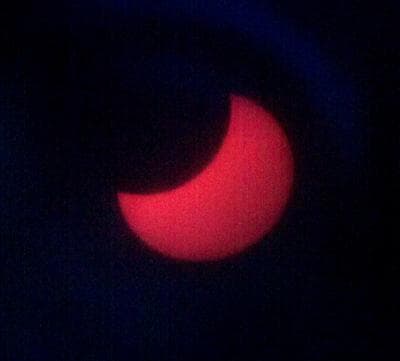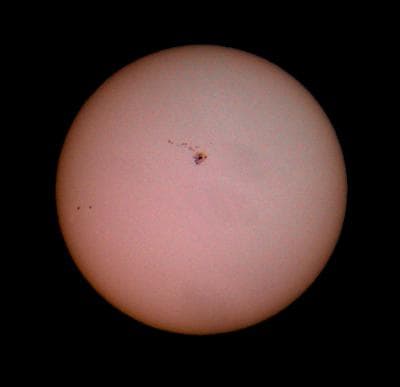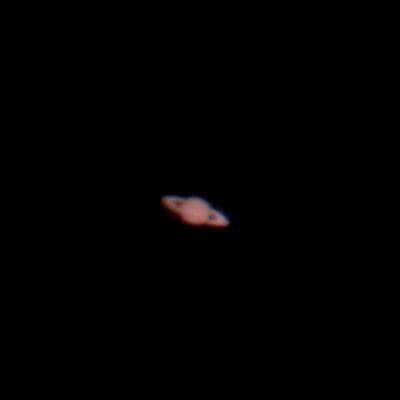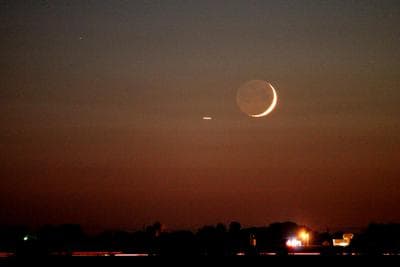
Eyes on the Sky
with David Fuller
with David Fuller
Astronomy Articles
Solar Eclipse Photos!
David Fuller — May 20, 2012How does one see - much less photograph - a solar eclipse when it is cloudy? Bring the right telescope of course - the "cloud clearing" one I own. The photos turned out okay too.Early astro - errr... solarphotography?
David Fuller — May 10, 2012My technique is to use my finger to brace the camera over the eyepiece by placing said finger between the phone and eyepiece itself - just propping it up there. The phone initially thinks it's looking at darkness, so when I do finally manage to locate the Sun with the camera, the exposure gets 'blown out" for a few seconds until it can compensate for the brighter image. Then, I carefully control my breathing - sometimes I feel like a sniper - taking my shots by tapping the phone lightly to take the picture when the screen has a sharp image that isn't vibrating too much due to my finger being between the scope/cameraSaturn at its finest
David Fuller — May 03, 2012Afocal photography used to be "Hold a film camera to the eyepiece of your telescope and hope you get something good." With cell phone cameras, we can actually see what we are capturing right then and there - though, it does need to be VERY steady skies and a lot of magnification to get anything good.Earthshine is the coolest thing
David Fuller — April 23, 2012Light. It either bounces around, is absorbed, or - as in most cases - there's a little bit of both happening. So what exactly has to occur for us to see the non-sunlit side of the Moon despite there not being any direct sunlight on it?OMG SPACE
David Fuller — April 06, 2012Space is big. REALLY big. In fact, it is a bit difficult to actually imagine just how big it is. And then I found a site where.... well, OMG. SPACE. It's big. REALLY big.




